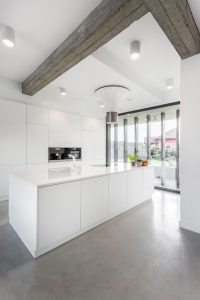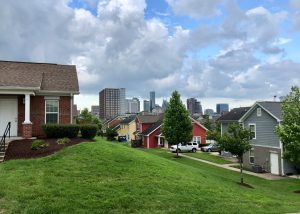What is a Dormer Loft Conversion?
A dormer loft conversion is when a box-shaped structure is added onto a pitched roof, creating walls that sit at a 90-degree angle to the ground. This helps to expand not only your headspace but floor space too.
In most cases, dormer loft conversions within the London area don’t require planning permission as long as they fall within the permitted development (PD) conditions for your kind of house. If your house is a maisonette or flat or falls within a conservation area or heritage site then different rules apply to permitted developments.
You won’t qualify for permitted development if…
- You live during a listed building or conservation area.
- Your dormer exceeds 40 meters on a terrace house or 50 meters on a semi-detached/detached home.
- The height of your dormer exceeds that of the initial roof.
- Your dormer features a balcony – though Juliet balconies are fine.
- The materials employed by your dormer are out of character with the remainder of your home.
- Your neighbors are laid low with your dormer through overlooking or overshadowing.
- Bats live inside your loft. As a protected species, you wish a special license to disturb their home.
If your project does fall within permitted development, confirm you apply for a Lawful Development Certificate. This not only ensures you won’t face any legal issues within the future but also proves to future buyers that they’re purchasing the standard design.
Types of Dormer Loft Conversion
When it involves adding a dormer, there’s a spread of designs to suit every home. Such as…
- Flat roof dormer: because it says on the tin, this is often a dormer with a flat roof that sits horizontally.
Ideal for: Smaller-scale conversions which require more room to be added to the loft area
- Shed dormer: a flat roof that slopes down.
- Dog-house dormer: a dormer with a roof that has two pitched sides like your classic dog house.
- L-shaped dormer: touched on above, this dormer has two parts that form an L shape.
- Hipped roof dormer: the same as a dog-house dormer, but with three sides rather than two.
Ideal for: Homes where the roof slopes down all four corners to the eaves, limiting space and requiring a bigger extension
Exterior Cladding for a Dormer Loft Conversion
When planning a dormer loft conversion it’s not just what’s on the within that counts. What you clad your dormer in matters too. betting on where you reside in London, especially if you reside in a very heritage or conservation area, you will need to clad your dormer during a certain material. If you’ve got the liberty to settle on, options include:
- Slate style tiles – these tend to match the roof tiles.
- Rendering – this may only be done if the dormer is formed of block walls instead of timber frames.
- Glass Reinforced plastic – a hard-wearing material which should last 20 years.
- Timber – there’s an array of options.
- Metal cladding –there are various styles to settle on from but zinc or copper are the foremost popular.




